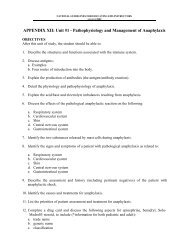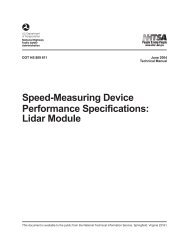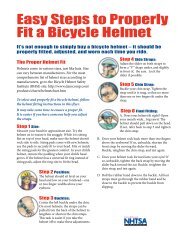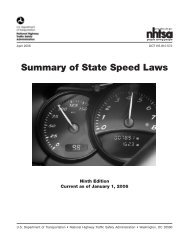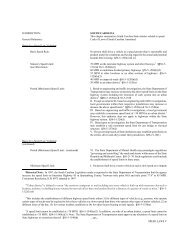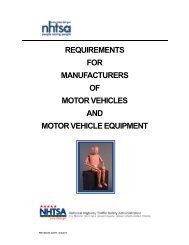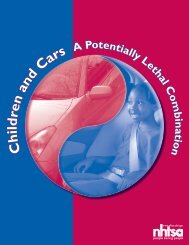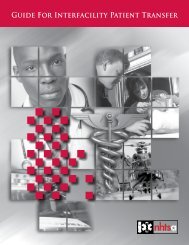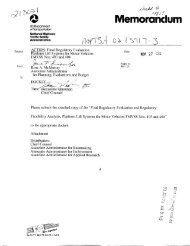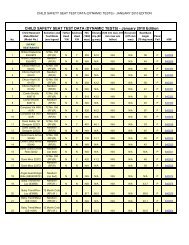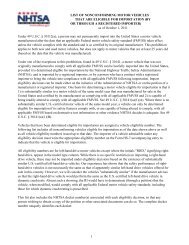Standard Practice for Emergency Medical Dispatch ... - NHTSA
Standard Practice for Emergency Medical Dispatch ... - NHTSA
Standard Practice for Emergency Medical Dispatch ... - NHTSA
Create successful ePaper yourself
Turn your PDF publications into a flip-book with our unique Google optimized e-Paper software.
ISSUES AND RECOMMENDATIONS FOR EMERGENCY<br />
MEDICAL DISPATCHING<br />
Two documents on emergency medical dispatching that have been developed by<br />
nationally authoritative agencies are:<br />
• The ASTM's "<strong>Standard</strong> <strong>Practice</strong> <strong>for</strong> <strong>Emergency</strong> <strong>Medical</strong> <strong>Dispatch</strong>"<br />
• The National Association of EMS Physicians' (NAEMSP) positions paper,<br />
"<strong>Emergency</strong> <strong>Medical</strong> <strong>Dispatch</strong>ing."<br />
The recommendations set <strong>for</strong>th in these documents are believed to be appropriate,<br />
and all EMS systems are encouraged to implement them as much as possible. Rather<br />
than repeating or superceding the points made in those documents, this paper<br />
addresses emergency medical dispatching issues with an emphasis on care of the<br />
AMI patient and reiterates the recommendations that are relevant <strong>for</strong> an emergency<br />
medical dispatching system to effectively handle the AMI patient.<br />
The ASTM is also currently developing two additional documents on emergency<br />
medical dispatching. It is anticipated that these standards will parallel many of the<br />
recommendations contained in this paper. These documents are:<br />
• The ASTM F-1552 "<strong>Standard</strong> <strong>Practice</strong> <strong>for</strong> Training, Instructor Qualification and<br />
Certification Eligibility of <strong>Emergency</strong> <strong>Medical</strong> <strong>Dispatch</strong>ers"<br />
• The ASTM F-1560 "<strong>Standard</strong> <strong>Practice</strong> <strong>for</strong> <strong>Emergency</strong> <strong>Medical</strong> <strong>Dispatch</strong><br />
Management."<br />
It should be noted that few well-constructed, objective, published studies exist that<br />
address the components or the effectiveness of components of emergency medical<br />
dispatching. This is in large part due to the difficulty in defining, as well as<br />
determining, those patient outcomes or improvements in patient conditions that are<br />
a result of emergency medical dispatching. The patient's condition can deteriorate<br />
during the time it takes a prehospital provider to arrive at the scene. Outcome<br />
parameters based on the EMS personnel's initial patient findings are not well defined<br />
<strong>for</strong> most prehospital problems other than cardiac arrest and critical trauma. To<br />
guarantee that outcomes actually result from the use of a given protocol, a study<br />
must demonstrate high compliance to that protocol by the dispatchers. Studies must<br />
clearly identify the exact protocol or specific part of the protocol that is undergoing<br />
evaluation. The need <strong>for</strong> further studies regarding the training and retraining, quality<br />
control and improvement of EMD's, and the benefit and optimum configuration of<br />
prehospital EMD protocols is a general recommendation of this paper.<br />
77



